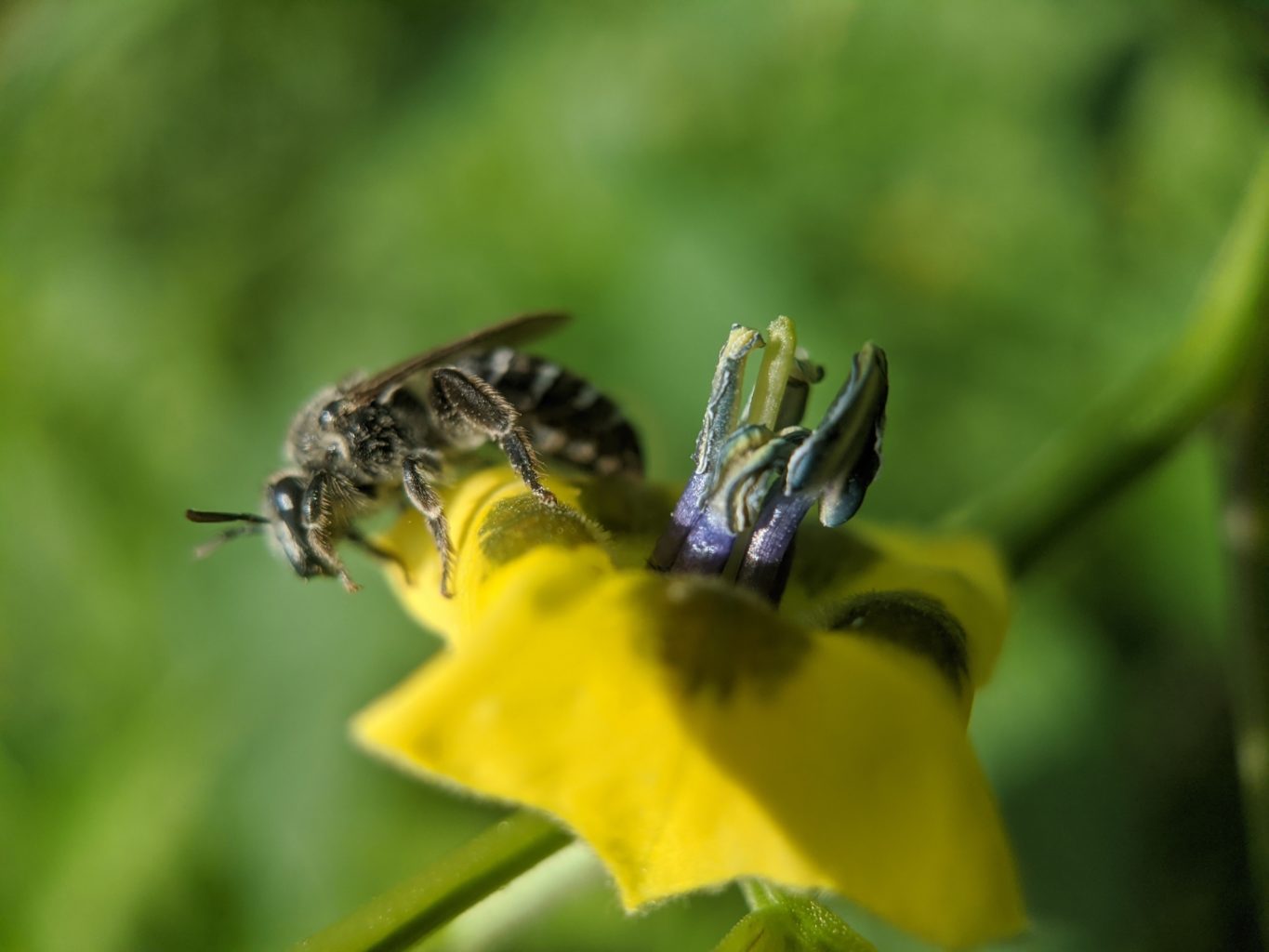Planting Keystones

By Sean Beckett
NBNC Director of Natural History Programs
I was in the garden lamenting what a single conservationist could really do amid a planet in crisis, when a Colletes latitarsis bee landed in my tomatillo flower.
A local bee biologist gave me two beautiful tomatillo starters this spring, on the condition that I photograph any and all bees seen at their flowers. Four unusual bees, some very rare, depend on plants in the tomatillo genus (Physalis sp.), and our native Physalids (a.k.a. ground cherries) are few and far between in the Green Mountains.
The bees showed up not 24 hours after the tomatillo’s first flowers emerged.
Here in my small backyard, a tomatillo plant became a safe refuge in a world of fragmentation and climate change—and a lesson that when it comes to biodiversity conservation at landscape scales, insects are about quality over quantity.
Ecologist Doug Tallamy recently came to town to share his research into this very question: If you’re going to plant something, what should you plant? In his book Bringing Nature Home, Tallamy explains that depending on what you plant, a small but verdant backyard can be as ecologically barren as a parking lot, or as biodiverse as a whole nature reserve.
Tallamy reasons that the entire food web is built upon insects, and those insects depend on plants in really specific ways. The majority of our insects depend on a host species or genera of plants in the way that monarchs needs milkweed.
If we then ask what species are home to the most insect diversity, we discover that introduced plants have zero or nearly zero insect species that can make a living on them. Our kindergarten-aged summer campers discover this each week when our instructors ask them to count the knotweed leaves that have been eaten by bugs, then try to find a single sugar maple leaf that has not been eaten by bugs. Japanese Barberry, Japanese Knotweed, Burning Bush, they are all, as Tallamy says, “nonfunctional plants – they are not able to support the insect diversity that drives our food web.”
Meanwhile, native oaks alone support 401 caterpillar species of in Vermont. Willows (Salix sp.) host 415, and aspens another 352. Yet even within our native flora, 75% of insect diversity is found on just 5% of plant species. By figuring out what species support the most insect diversity, we also generate the ideal planting list of “ecological keystones” for our biodiversity micro-hotspots.
With fresh tomatillos still ripe on the vine, we’re now planting a row of blueberries to support another 276 species or caterpillars in our humble yard. As time goes on, I’ll work my way down that keystone list – oaks, willows, aspens, and so on— each planting a different web of interdependencies between the birds, the leaves, the caterpillars, and the earth. In doing so, a small backyard becomes a refuge, shelter, and nursery for biodiversity.
And it gives me hope to know that large-scale conservation can happen with small-scale choices. Like the tomatillo bees, said my biologist friend, “If you build it, they will come.”
Visit the National Wildlife Federation’s Native Plant Finder (nwf.org/nativeplantfinder/) to find your keystone planting list.
*Photo by Spencer Hardy – Broad-footed Cellophane Bee (Colletes latitarsis)

